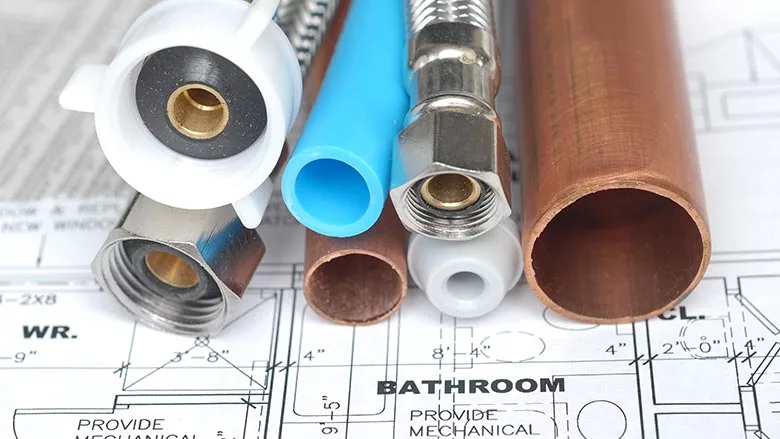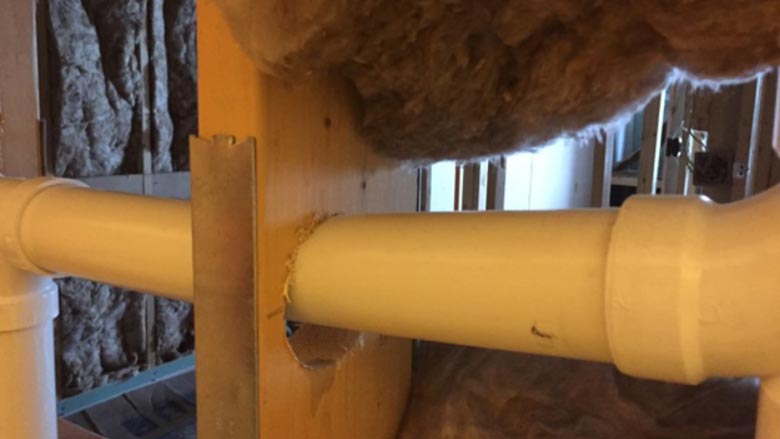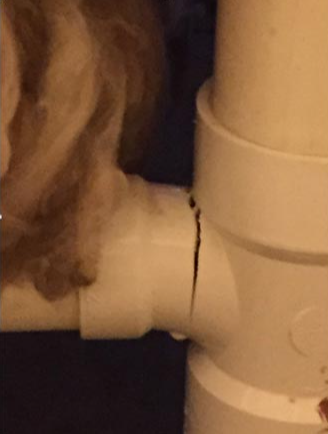Plumbing Talking Points
David Dexter: Understanding thermal expansion and expansion fittings
Material selection can create or prevent many expansion and contraction problems.

Branislav/E+ via Getty Images
Recently, there was a discussion on the ASPE Open Forum regarding, “Plumbing Pipe Thermal Expansion and Expansion Fitting.” Generally, this topic would be found within your specifications under Section 22 05 16, “Expansion Fittings and Loops for Plumbing Piping;” this topic is under-discussed, and in many cases, poorly understood by many designers and engineers.
All materials expand and contract as the temperature conditions within which they are installed or operate change. Expansion and contraction occurs in all directions; longitudinal and radially. The change in longitudinal (length) is of greater concern, one must also understand that radial (change in diameter) does occur.
As designers and engineers, we must provide allowances for the expansion and contraction of materials in the design of our systems. We must also realize that some points in those systems are fixed and cannot move. Between those fixed points, the design and material selection must be allowed to compensate for those changes in length (longitudinal growth). The systems must absorb those changes in length by the configuration of the system or by the use of specialized expansion joints.
Material selection can create or prevent many expansion and contraction problems. Not only must we, as designers and engineers, be aware of how our material selections impact the system design, but we need to understand how the changes in our systems interact with the surrounding materials. The closer our material selections react with the building materials, the less we have to be concerned about these thermal characteristics.
Cast iron is more in tune with the building materials’ reaction to temperature changes. Its expansion is very close to that of steel and masonry materials.
Therefore, it is less likely to have a need for expensive expansion joints and special piping offsets. That is not always the case with other DWV (Drainage, Waste and Vent) materials such as polymers and thermal plastics. This is not to imply that these materials are inferior or of less viability. But, as we all know — or should know — there is no material that matches every condition or need. Every material has an application, but no material is perfect for every application.
It is our responsibility to appropriately select and recommend the best material to serve the specific conditions of the project. But the effect of expansion/contraction is not isolated to just DWV systems. Every system we design is impacted in various ways; domestic water, gas distribution, medical gases, etc. And, adding to the complexity, no single material is used throughout the system. These materials change based on size and what they serve. Mains and stacks may be one material and branches and runouts comprised of a different material.
As part of the responsibility for material selection, one must understand both the conditions in which the materials will be installed as well as the normal operating conditions. After all, the material will react thermally to any change in temperature. While the normal operating range may only have a minimal effect, the temperature changes may occur between the materials when they are installed and when the building is environmentally conditioned may be over a greater range. For example, most of us in the vertical build market understand that floor materials are typically required to be placed within the environment and temperature conditions in which they will reside. Generally, this means that these materials must be within those conditions for a minimum of 24 to 48 hours to allow them to expand/contract from their stored temperatures to the conditions in which they will be installed. This condition can have the same impact on plumbing materials that may be exposed to exterior conditions for a period of time. When these materials are installed during a cold spell and the building is not “dried in” and conditioned; the thermal change will result in a greater expansion of the system than just the normal changes that occur in the operational cycle as they are brought up to the enclosed buildings’ conditioned temperatures. The expansion and contraction change between unconditioned environments and the environment of a conditioned building will most likely be greater than those that occur during normal operating conditions.
While designers and engineers cannot always control the environmental conditions that occur in the field, we must understand the impact of those conditions. The contractors should also be aware of these same issues. This is why designers and engineers use a “Basis-of-Design” — it allows the design to consider expansion and contraction of the design materials. Should a contractor select from other material options contained within the specification; they must make the necessary revisions to the design for review and acceptance by the designer/engineer. Failure to consider the consequences of such changes can have devastating impacts on the building design and function, and add significant costs to those involved.
As part of the discussion on ASPE’s Open Forum, James Richardson, plumbing inspection supervisor for the city of Columbus, Ohio, provided photographic documentation of the impact that thermal expansion and contraction can have on an installed system. The building from which these photographs originated was a 4-story wood structure, probably a multi-family or lodging type of structure. The piping was installed during the coldest days of the winter. In Ohio, the average winter temperature is about 30° F, although it is not unusual to see temperatures in the low 20s. Once the contractor got the DWV system installed and the building was “dried-in,” they immediately brought in temporary heat and started stacking/hanging drywall. This meant changing the temperature from say 20° (coldest days of winter) to say 65°. That would have resulted in a change in temperature of about 45°. PVC would have an increased length of approximately 1.65 inches per 100 feet.
The following photographs document the result of this thermal growth.


As a result of the stress being placed on the arm-out, the sanitary tee has had a stress failure involving the integrity of the DWV system; a system that would not be capable of holding a test and unsafe for operation.

The thermal expansion has pushed up the fire caulk that had been place around the stack to fill in the floor assembly penetration. And as a side note, the fire stopping would appear to not meet the minimum requirements of the code. This, in my judgment, indicates a lack of craftsmanship and quality control.
As one can see from this single example, designers and engineers must consider thermal expansion and contraction during the design process. Failure to do our due diligence can have costly effects. Not only do we need to consider the operational changes that result from thermal expansion and contraction; we must also be aware of those same characteristics as they relate to the changes that occur between the installation and the building operational temperatures. The materials do not know the difference nor between the installation or operational phases nor do they care.
So as designers and engineers, we need to do our due diligence as it relates to thermal expansion and contraction effect on our designs. Regardless of the materials that we use for the “Basis-of-Design,” thermal characteristics need to be evaluated. And where necessary means must be incorporated into the design to compensate for those thermal changes, both installation and operational. And when a contractor decides to use an alternate or optional material, require that they make the engineering design changes necessary to assure proper operation. They may determine that the cost savings they think they have is nonexistent, once the redesign costs are included in the cost evaluation.
It is the responsibility of the Engineer-Of-Record (EOR) to protect the public health, safety and welfare of the building while looking out for the owners’ and/or firm’s interests. A design and/or installation as shown in the above photographs fail to meet those responsibilities. The designers and engineers that work under a professional engineer’s responsible charge need to understand the material characteristics and environmental conditions that impact those materials. They also need to understand the environmental conditions that can impact the construction process.
The construction team is responsible for the “means and methods” of the construction process. While the project specifications may allow the contractor some latitude in material selection, the “Basis-of-Design” is the standard that any options or alternates the contractor proposes must meet. It is the contractors’ responsibility to make any and all changes to the designs that are necessary should they deviate from the “Basis-of-Design.” And those proposed design changes must be acceptable and approved by the EOR, who is responsible for the design that contains their signature. If the contractor is not capable or qualified to alter the design, then they must obtain those services at their cost.
It is not the owners’ nor the design team who is responsible for costs associated with the contractors’ decision to utilize other than “Basis-of-Design” materials or proposed alternates; the contractor must take that into consideration when offering the change. When a contractor proposes to go outside of the “Basis-of-Design,” they need to understand the full implications of that decision and adequately consider all of the costs associated with the decision.
Looking for a reprint of this article?
From high-res PDFs to custom plaques, order your copy today!









